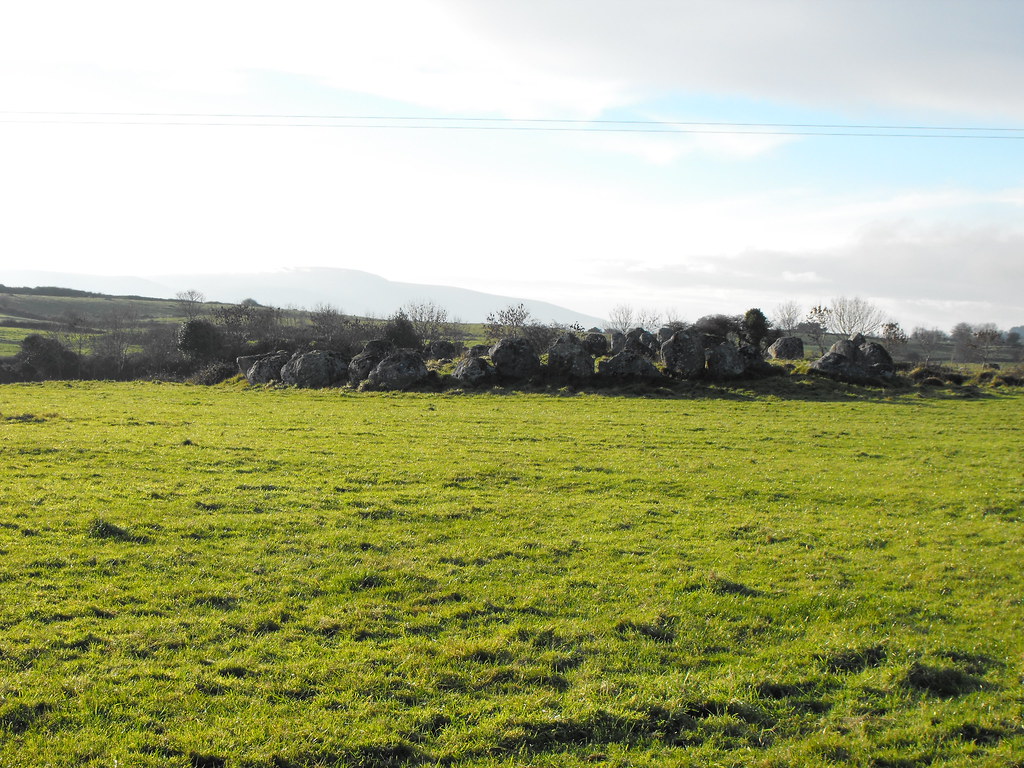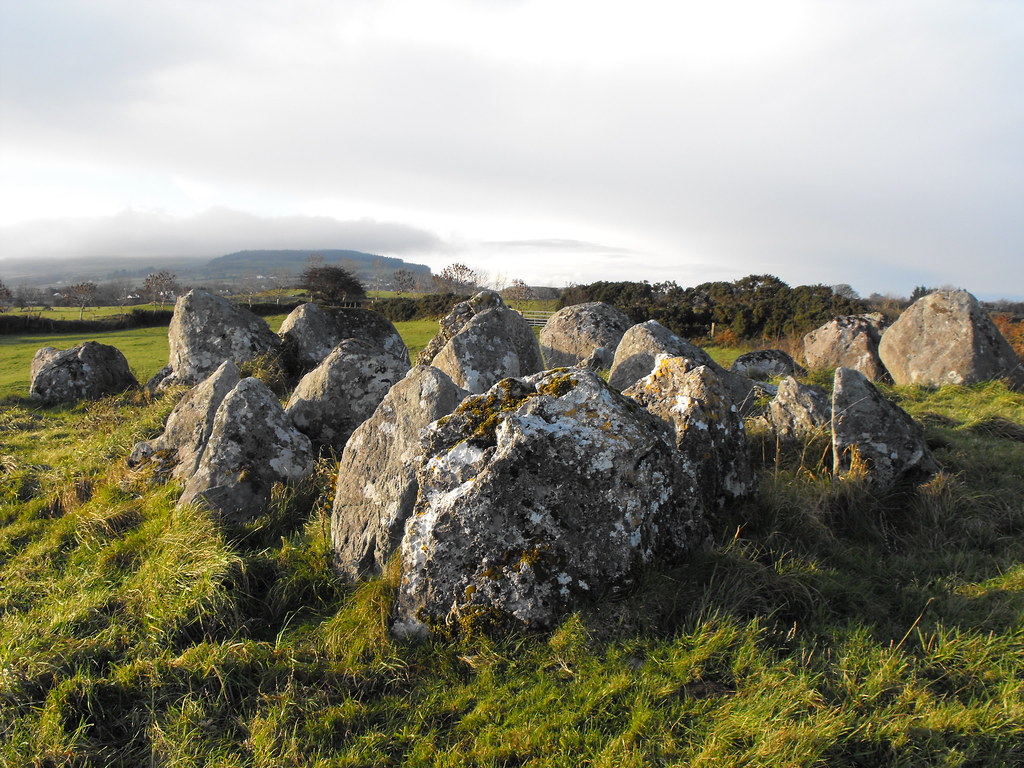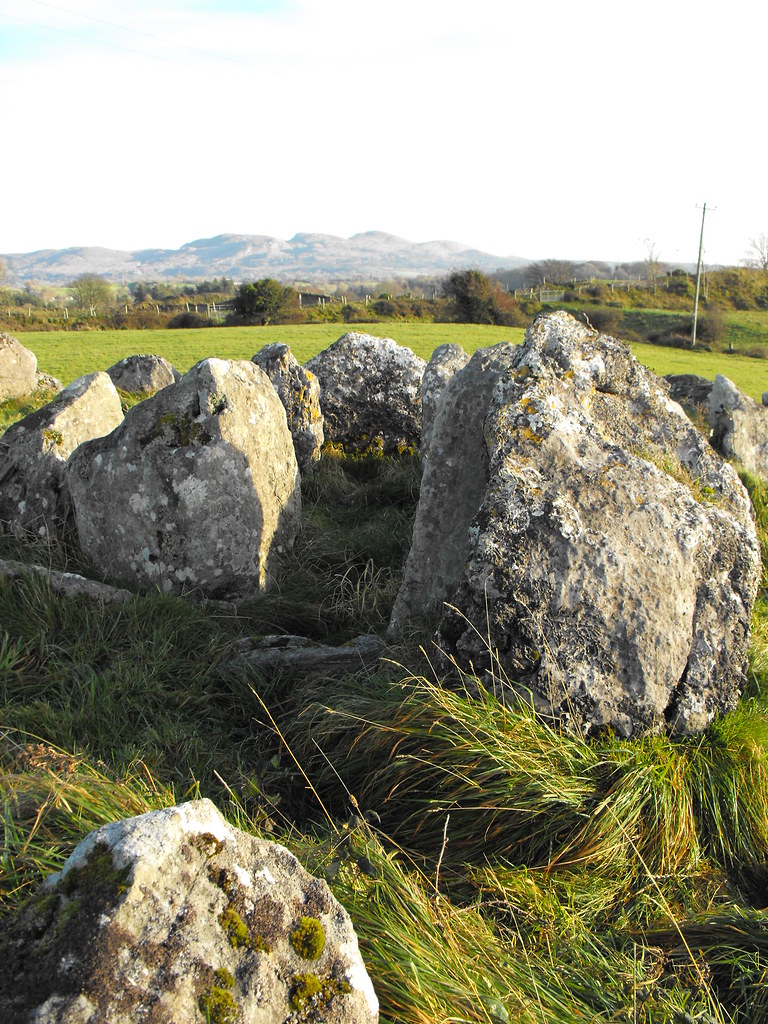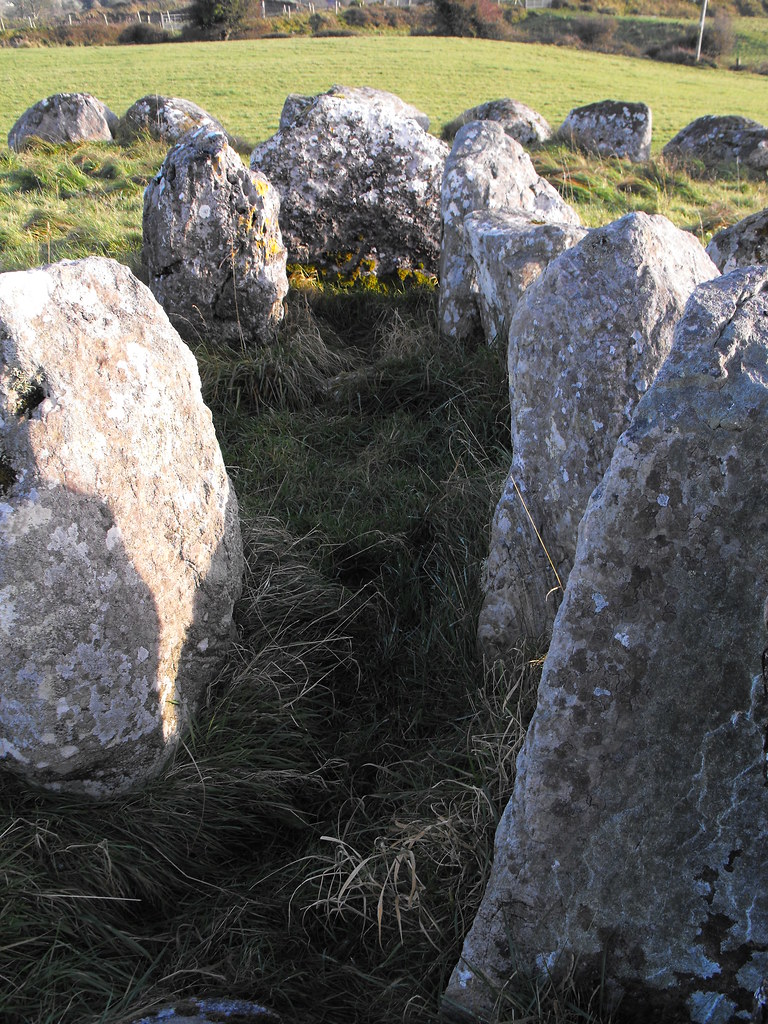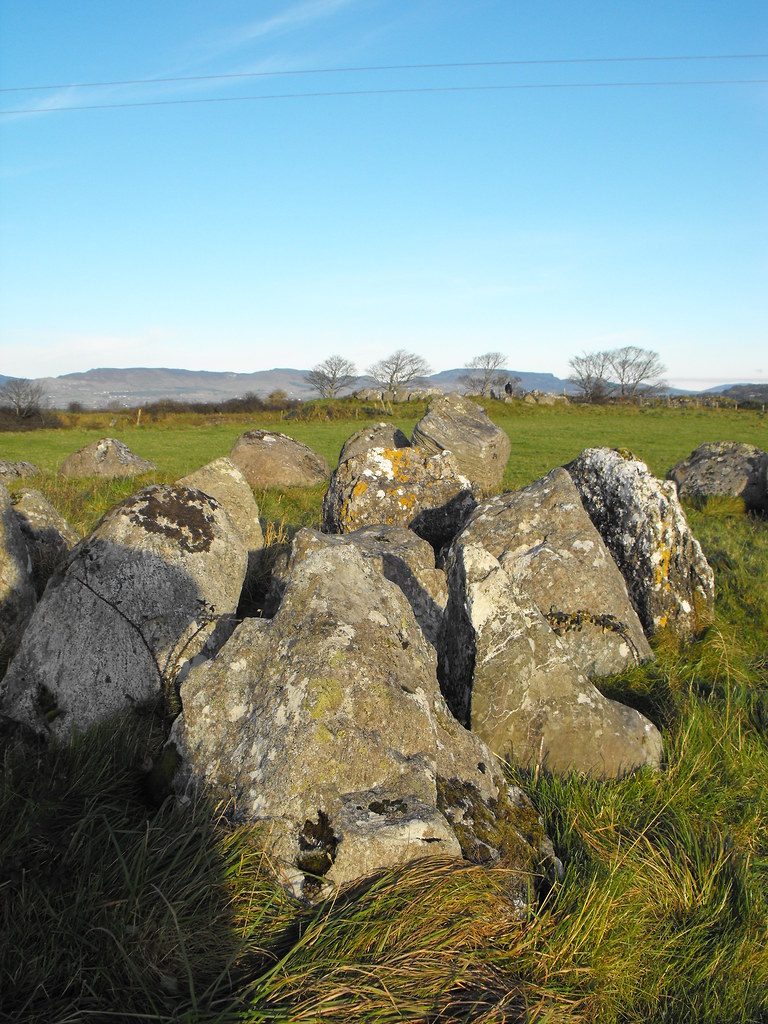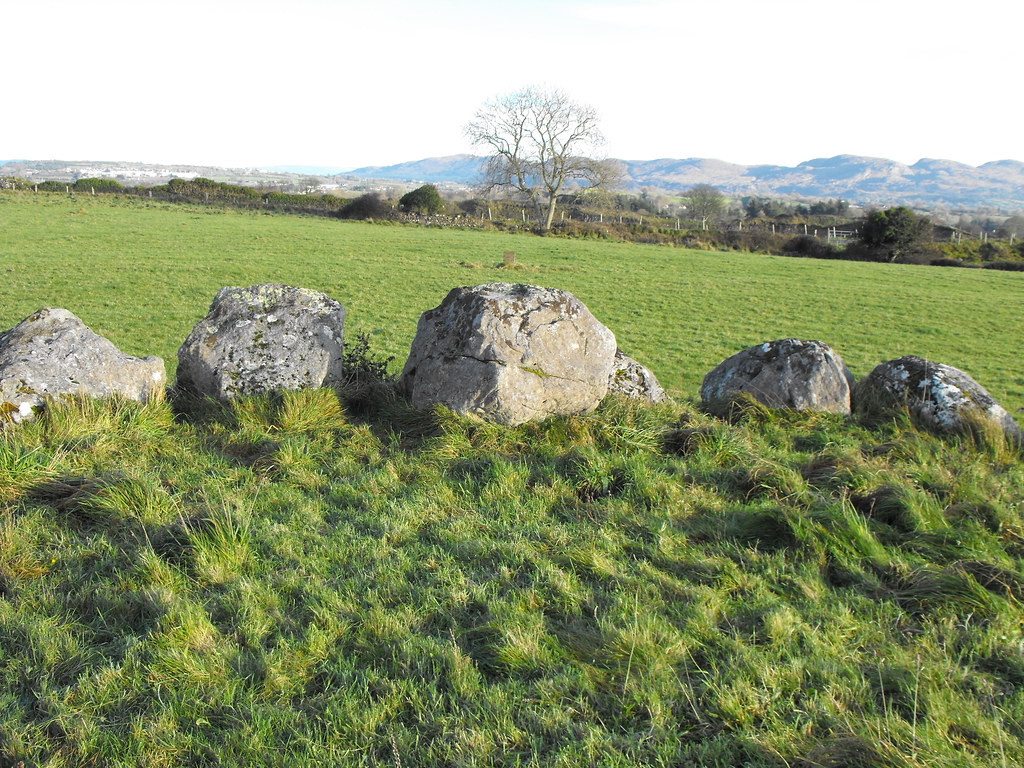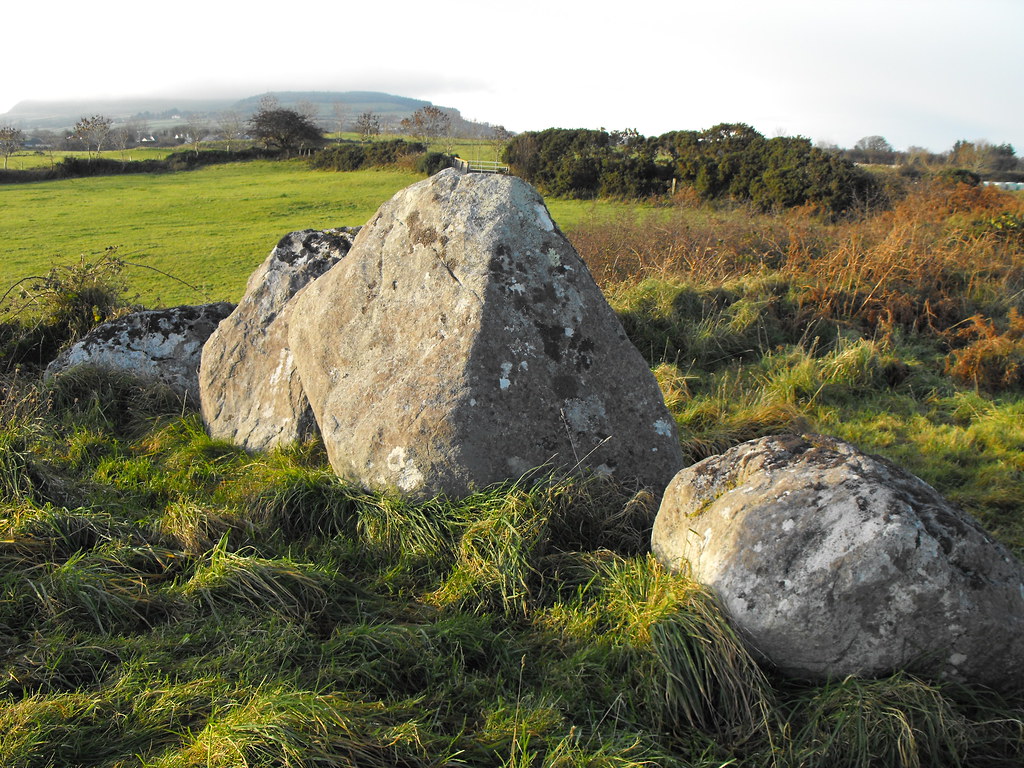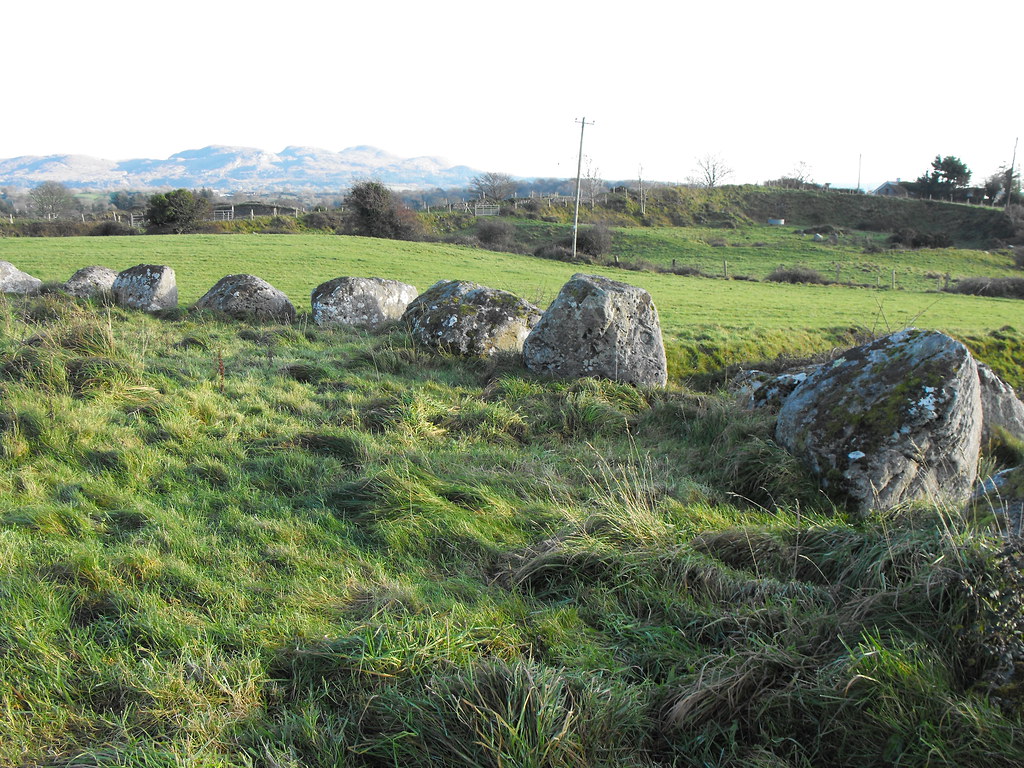Location – In the same field as tomb 26.
Description and History – This tomb is, for me, the most interesting of all the tombs at Carrowmore because it still has some of the inner tomb remaining and it is cruciform in shape like the tombs in the Boyne Valley. This may be what the other boulder circles were like. Although the central tomb remains it is skeletal. This is also one of the largest tombs at Carrowmore measuring 23 meters in diameter and consisting of 37 stones. The central tomb has 13 stones and consists of a small passage and three small chambers. No capstones remain. This tomb was dated to 3900 B.C. Found here were antler pins, ivory rings made from the teeth of sperm whales (some now consider it to be walrus tusk ivory) and a selection of pottery. A small stone cist was also found at the entrance to the chamber and it contained the remains of a female between the age of 20 and 30. This tomb appears to have been reused in the Iron Age with many bones dating to this period. The bones found were mostly skulls and teeth and may be the result of sacrifice. It could also be the result of war as the Celts were known head hunters.
Difficulty – Easy but watch your step.
Back to the Carrowmore main menu.
Description and History – This tomb is, for me, the most interesting of all the tombs at Carrowmore because it still has some of the inner tomb remaining and it is cruciform in shape like the tombs in the Boyne Valley. This may be what the other boulder circles were like. Although the central tomb remains it is skeletal. This is also one of the largest tombs at Carrowmore measuring 23 meters in diameter and consisting of 37 stones. The central tomb has 13 stones and consists of a small passage and three small chambers. No capstones remain. This tomb was dated to 3900 B.C. Found here were antler pins, ivory rings made from the teeth of sperm whales (some now consider it to be walrus tusk ivory) and a selection of pottery. A small stone cist was also found at the entrance to the chamber and it contained the remains of a female between the age of 20 and 30. This tomb appears to have been reused in the Iron Age with many bones dating to this period. The bones found were mostly skulls and teeth and may be the result of sacrifice. It could also be the result of war as the Celts were known head hunters.
Difficulty – Easy but watch your step.
Back to the Carrowmore main menu.
The central tomb. It's hard to make out without any birds eye view.

